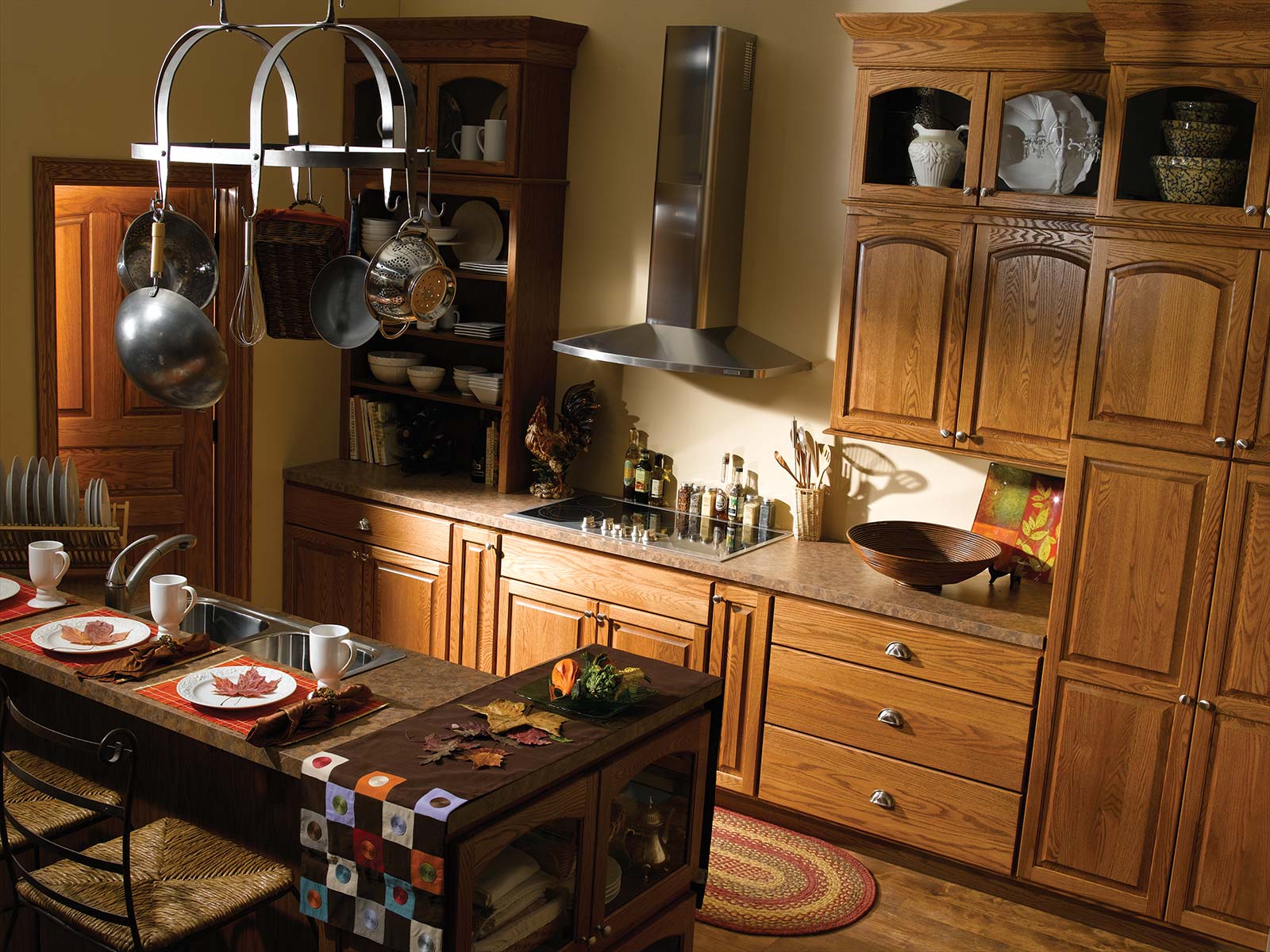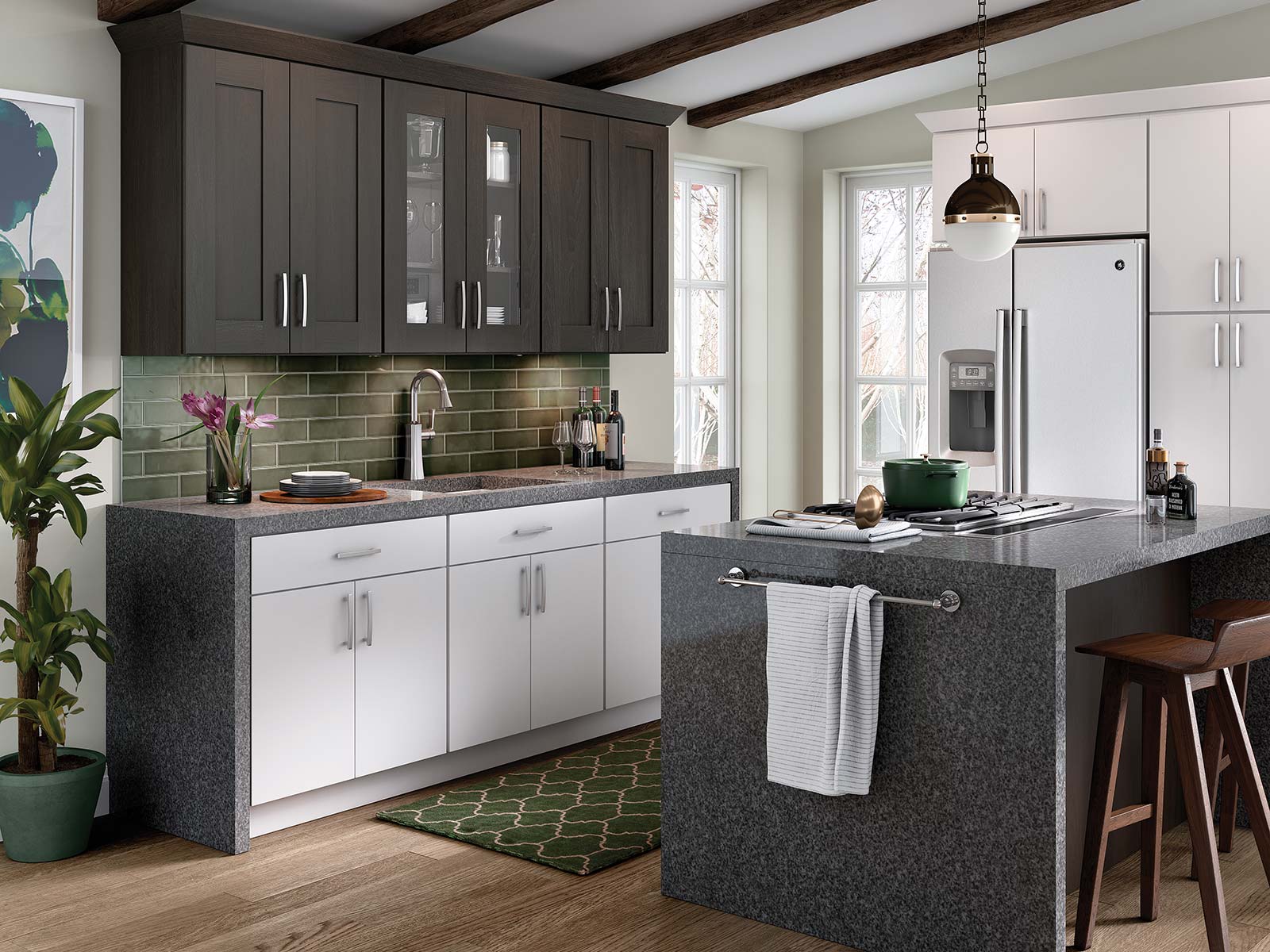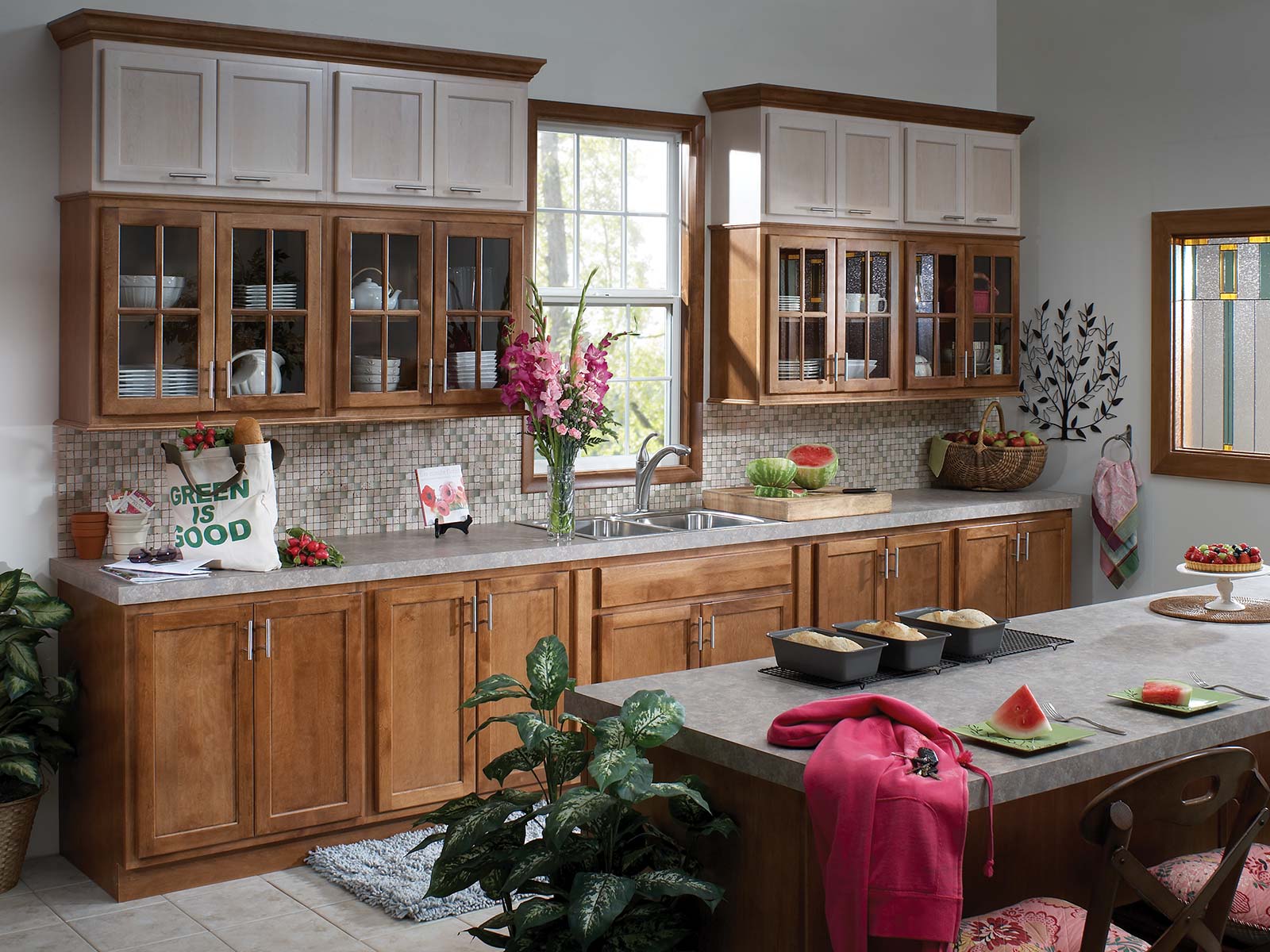How to Clean Cabinets
POSTED ON Wednesday, November 7, 2018 IN Kitchen

Regular care is the key to your cabinets looking their best.
Cabinets can often serve as the focal point of a kitchen or bathroom. You’ve likely selected yours because of their artfully-crafted design and high-quality materials.
But the attention that comes from being a focal point also means people are going to notice when the cabinets are unclean. Fingerprints, food splatters, and watermarks are the usual suspects and can lead to tough stains if left untreated.
Regularly cleaning your cabinets is important to maintaining the qualities that inspired you to add them to your home in the first place. The first step is understanding the recommended cleaning materials and methods for your type of cabinets — especially when it comes to tough spots and stains — and knowing when and how frequently to maintenance them.
How to Clean Wood Cabinets
Wood cabinets are a staple of modern cabinetry in large part because of the natural characteristics they bring to your kitchen or bathroom, specifically their differences in wood color and grain. Regular cleaning is important to maintaining that natural character.
Once your wood cabinets are first installed, you’ll want to clean the surfaces with a damp cloth and dry immediately with a soft cloth, wiping in the direction of the wood grain. Follow that by applying a thin coat of high-quality polish to protect from scratching, staining, and moisture.
Routine cleaning, at least once every two weeks or more, consists of wiping down your cabinets with a soft cloth and warm water. There are a number of commercial cleaning products available, but if water alone is not effectively cleaning your cabinets, the simple but effective solution is to add a few drops of dish soap to the water.
Due to their close proximity to a stovetop, kitchen cabinets are prone to attracting grease. Multipurpose cleaners that contain citrus oil can cut through layers of grime and remove the grease. This is especially effective for cleaning oak cabinets that require a non-abrasive solution. Just spray it on the affected area of the cabinet and let it settle for a few minutes before using a sponge or microfiber cloth dampened with warm water to gently scrub the spot.
Alternatives include creating a paste of baking soda and water, which can then be applied to the spot or stain and scrubbed clean. Rinse with water and then dry using a soft cloth.
Avoid using products that contain bleach, solvents, strong detergents and soaps, ammonia, nail polish remover, and paint thinners, as they can damage your cabinets. Plastic brushes, steel wool, and scoring pads can also be too abrasive for wood cabinets.
 Newman Arch Kitchen with a toffee finish.
Newman Arch Kitchen with a toffee finish.
How to Clean Laminate Cabinets
Laminate cabinets are a popular choice for kitchens and bathrooms, in part because their surfaces are stain resistant and easy to clean. If properly cared for, the interior and exterior surfaces of your laminate cabinets can last a lifetime.
For everyday maintenance, wash the laminate cabinet with warm water, a mild dishwashing detergent, and a damp sponge, and dry with a soft cloth.
To remove tough stains, create a thick paste by blending baking soda and water. Apply that paste to the stain and rub gently with a soft bristle brush before rinsing and drying with a soft cloth. If the stain remains, consider purchasing an all-purpose cleaner.
Removing grease from laminate cabinets requires soaking a washcloth in a mixture of vinegar and water and using that to wipe the grease from the surface.
 Contrasting colors for the win with this contemporary Quincy 3 (Marketplace) style.
Contrasting colors for the win with this contemporary Quincy 3 (Marketplace) style.
How to Clean Painted Cabinets
Bertch’s finish process on painted cabinets results in a durable surface that is easy to wipe clean. But you’ll want to avoid using abrasive cleaners or scouring pads that might strip the paint or damage the finish.
Dish soap and warm water, along with a microfiber cloth, is the best solution for cleaning a painted cabinet. Dish soap will effectively remove any food-related grime. Taking a proactive approach to cleaning will prevent a build-up of grime and grease.
To remove grease from a painted cabinet, wipe the cabinets clean with a combination of white vinegar and hot water, then rinse with clear water.
How to Clean Cabinets Naturally
There is no shortage of commercial cabinet cleaners available at your local department store. But using ingredients from your own kitchen can be as effective and even more affordable.
Vinegar is considered the go-to ingredient for homemade cabinet cleaning solutions. Best practices recommend that you combine vinegar in a 50/50 solution with warm water and use a spray bottle to mist a layer of the solution onto the surfaces of your cabinet. Once you’ve allowed it to settle for a minute or two, wipe the cabinet clean with a soft cloth. Remove the cleaner with a second cloth that has been dipped in clean water.
Feel free to add a few drops of liquid dishwashing detergent for a deeper clean.
Baking soda applied to a wet sponge is also commonly used to scrub stains. Always use a soft toothbrush or nylon-bristle scrub brush, rather than steel wool, to avoid scratching the surface.
How to Clean Cabinet Glass Doors & Mirrors
To clean glass or mirrors mounted to your cabinet, purchase any commercial glass cleaner.
Spray the cleaner into a lint-free cloth or paper towel before wiping the glass. Spraying the glass directly risks having the cleaner seep into other areas, discoloring the wood.
It is entirely up to you whether you want to clean the glass while it is mounted to the cabinet or if you would rather remove it for ease of access. If you are cleaning mounted glass, take care not to damage the finish of the door or cabinet parts. Conversely, removing the glass panel from the cabinet requires extreme care, as all glass if fragile.
 Summer Vibe with this traditional Logan (Marketplace) style.
Summer Vibe with this traditional Logan (Marketplace) style.
Cleaning Cabinet Hardware
Cleaning the surfaces of your cabinets is only half the battle. Don’t forget about maintaining the knobs, handles, and pulls, all of which are decorative pieces that enhance your cabinetry.
Dip a toothbrush in a 50/50 solution of vinegar and warm water and scrub the hardware, the surrounding wood, and the crevices of ornate trim. If you can, remove the hardware from the cabinets and drawers before cleaning and rinsing each piece.
Preventative Care
The simplest and easiest tip for avoiding dirt and dust build-up is to dust your cabinets on a regular basis. Utilizing a soft cloth, a rag, or a standard duster, gently dusting your cabinets at least once every two weeks will help prevent oil and grease particles from settling on the surfaces, reducing the need for a deeper cleaning.
Try to clean up spills as promptly as possible using a damp cloth or sponge. Prolonged contact with a substance can lead to difficult-to-remove stains or cause other damage.
Cabinets installed near a self-cleaning oven are susceptible to finish or surface damage from the intense heat that can escape if the heat gasket does not seal properly. To avoid this, remove the doors and drawers from all cabinets above or adjacent to the oven during a cleaning cycle.
As a general rule, avoid mounting heat-producing appliances, such as coffee makers and toaster ovens, beneath cabinets. Excess heat and moisture can damage the cabinets.
UV Effects
Nearly every homeowner welcomes an abundance of natural sunlight into their home, but the ultraviolet (UV) rays can affect the appearance of your cabinets. To counter this, Bertch applies UV inhibitors to all our wood cabinetry as part of the finishing process.
This will preserve the finish of your cabinet, but the wood is subject to change depending on its natural characteristics and the amount and direction of light exposure.
The maintenance requirements for each cabinet will vary slightly based on the finish and material. Whereas smoother finishes may be less susceptible to dust collection, wood grain may be better at hiding stains or spills. For this reason, it is important to consider the maintenance and cleaning requirements for your type of cabinet prior to purchase.
RECOMMENDED